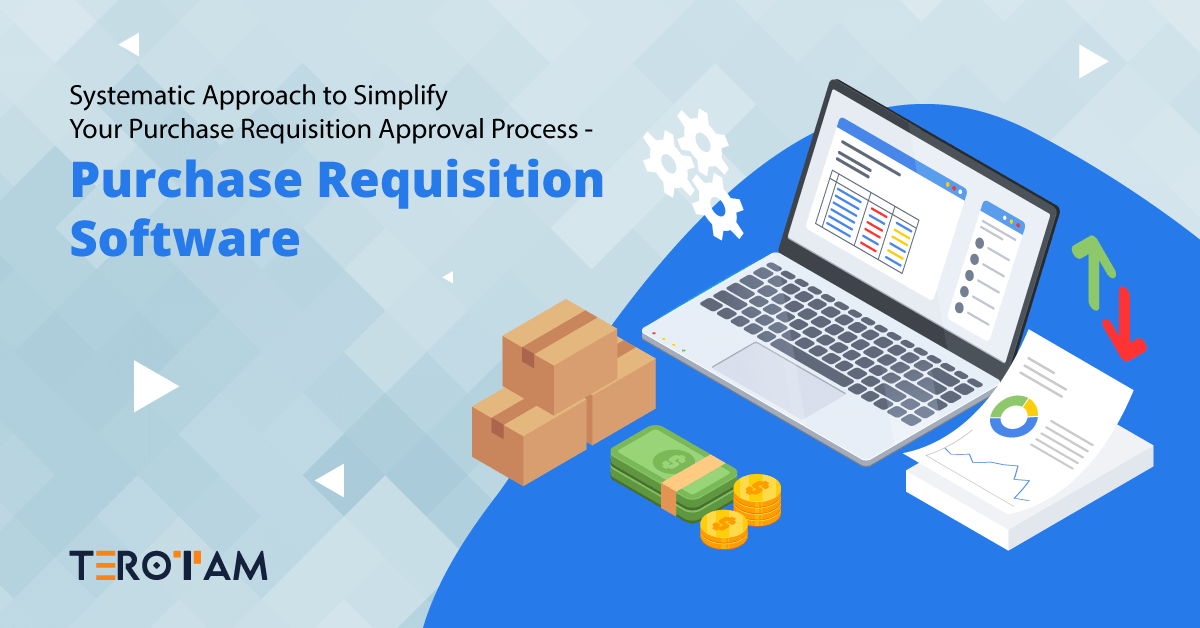An organization must occasionally buy goods, services, or other things for its operations. What about other important expenditures that are less frequent? Some of them are recurring purchases, such as office supplies or cleaning products.
Successful businesses must control these expenditures in a way that makes sure money is being spent sensibly and is being recorded. Purchase requisitions are the most popular and practical method for accomplishing this.
We’ll discuss what a purchase requisition is, how they operate, and how do purchase requisition software can assist your business in streamlining the procurement requisition approval process to make it even more useful for its requirements.
What is Purchase Requisition?
An employee utilizes a purchase requisition, a form, and an official document, to make purchases for the business. However, the purchase requisition must pass through several phases before it is approved.
Before it is approved by the management and sent to the financial department, all information must first be filled out accurately after the manager determines that it is necessary. Additionally, they look to see if the needed item is in stock. The item is allocated if there is stock.
Finally, the top management is consulted for ultimate approval.
The purchase requisition form contains all the necessary details, including the name of the requestor, department, item requirement, quantity, price, vendor information, and most significantly, the justification for the item’s need.
If the purchase request is refused at any point, comments are written and a justification is provided as to why it was rejected.
What is the Purchase Requisition Approval Process?
A purchase requisition approval process is a workflow that organizations use to manage the process of requesting and approving the purchase of goods or services. Typically, a purchase requisition is created by an employee or department within an organization that needs to purchase something for their work.
The approval process is a set of steps that ensure the request meets the company’s procurement policies, and that the requested items are necessary and within budget. The approval process usually involves a series of review and approval steps, with different people or departments responsible for each step.
Here are some common steps in a purchase order requisition approval process:
1. Request: An employee or department identifies the need for goods or services and submits a purchase requisition.
2. Review: The purchase requisition is reviewed by the relevant department or personnel to ensure it meets procurement policies.
3. Approval: Once the requisition is reviewed, it is sent to the relevant department head or manager for approval.
4. Budget Check: The finance department may need to check if the purchase requisition is within the company’s budget.
The specific steps and approval requirements of a requisition approval process may vary depending on the organization’s size, industry, and policies.

Why Purchase Requisition Approval is Important?
The requisition approval process is important for several reasons:
1. Control over spending: A well-designed procurement requisition approval process can help control spending and prevent unauthorized purchases. By requiring approvals from multiple levels of management, the organization can ensure that purchases are within budget and aligned with its strategic objectives.
2. Compliance with procurement policies: The purchase requisition process ensures that purchases are compliant with the organization’s procurement policies, including vendor selection, price negotiation, and payment terms. This helps prevent fraud and misuse of company funds.
3. Accuracy of orders: The approval process also helps ensure that purchase orders are accurate and complete. This can prevent errors in orders, such as incorrect items, quantities, or pricing.
4. Accountability: The approval process creates a clear audit trail that documents who authorized the purchase, what was purchased, and why. This provides transparency and accountability, which is essential for financial reporting and auditing.
5. Better supplier relationships: A streamlined and efficient purchase requisition approval process can help build better relationships with suppliers. When suppliers receive accurate and timely orders, they can fulfill them more efficiently, which can lead to better pricing and improved service levels.
A well-designed purchase requisition process is essential for effective procurement management. It helps organizations control costs, comply with policies and regulations, and build better relationships with suppliers.
What are the Major Challenges of the PR Approval Process?
The procurement requisition approval process can face several challenges, which can cause delays and lead to inefficiencies in procurement management. Some of the major challenges of this process include:
1. Lack of visibility: When the approval process is manual, tracking the status of requests and approvals can be difficult. This can lead to delays and errors, as stakeholders may not have access to real-time information on the status of requests.
2. Complexity: The purchase requisition approval process can be complex, involving multiple stakeholders across different departments. As a result, it can be challenging to streamline the process and ensure that all stakeholders are aligned.
3. Inconsistent approval criteria: In some cases, the criteria for approving purchase requisitions may be inconsistent, leading to confusion and delays. To avoid this, organizations should establish clear guidelines for approving requests, including spending limits, departmental approval hierarchies, and exceptions.
4. Poor communication: Effective communication is critical to the success of the requisition approval process. If stakeholders are not informed of the status of requests or if communication is not clear, the process can be delayed, and stakeholders may make mistakes.
5. Lack of automation: If the approval process is manual, it can be time-consuming and prone to errors. Automating the process using procurement software can help streamline the process, reduce errors, and improve visibility.
6. Resistance to change: Some stakeholders may resist changes to the purchase requisition approval process, especially if they are used to an existing process. To overcome this challenge, organizations should communicate the benefits of the new process and involve stakeholders in the design and implementation.
To overcome these challenges, organizations should adopt best practices for purchase requisition approval, such as adopting n e-procurement solution or a purchase requisition software, automating the process, establishing clear guidelines for approval, and providing training to stakeholders. By addressing these challenges, organizations can improve procurement management, reduce costs, and build better relationships with suppliers.
How Purchase Requisition Software Streamlines the Requisition Approval Process?
Automated Workflow Management
One of the primary benefits of using such is automated workflow management. The software can automate the entire purchase requisition approval process, from request creation to approval and procurement. This automation eliminates the need for manual processes, which are time-consuming and error-prone.
Real-time Visibility
Purchase requisition software provides real-time visibility into the status of purchase requests. Employees can track the status of their requests, and managers can monitor pending requests and take action if necessary. Real-time visibility helps prevent delays and ensures that procurement processes are efficient.
Improved Communication
Procurement requisition software improves stakeholder communication by providing a centralized platform for request creation and approval. Employees can submit requests and managers can approve them, all within the software. This eliminates the need for emails, phone calls, or face-to-face meetings, which can be time-consuming and prone to miscommunication.
Increased Accountability
The magic of such software is that it improves accountability by creating an audit trail of all purchase requests and approvals. This audit trail makes it easy to track who requested what, when, and why, and who approved the requests. This increased accountability helps prevent fraud and misuse of company funds.
Greater Control Over Spending
It also provides greater control over spending by enabling organizations to set spending limits and establish approval hierarchies. This control helps prevent unauthorized spending and ensures that purchases are within budget.
Enhanced Compliance
Purchase requisition software helps organizations comply with procurement policies and regulations by enforcing compliance rules, such as vendor selection, pricing, and payment terms. This compliance helps prevent fraud, reduce risk, and improve financial reporting.
Wanted to Streamline your Purchase System? – We have the Solution..!!
Traditional requisitions and requisition approval systems can be problematic as we have discussed in this article. The e-Procurement solution is the best approach any organization can adopt to streamline its purchase system. At TeroTAM, we have a Systematic e-Procurement Solutions where we offer the Purchase Requisition System with all the advanced features that help you systematize and streamline your purchase process and keep you well-planned and well-informed.
Wanted to know more about it? – Talk to our experts now or drop a email at contact@terotam.com and enjoy the most systematic purchase requisition approval system in your esteemed organization.








